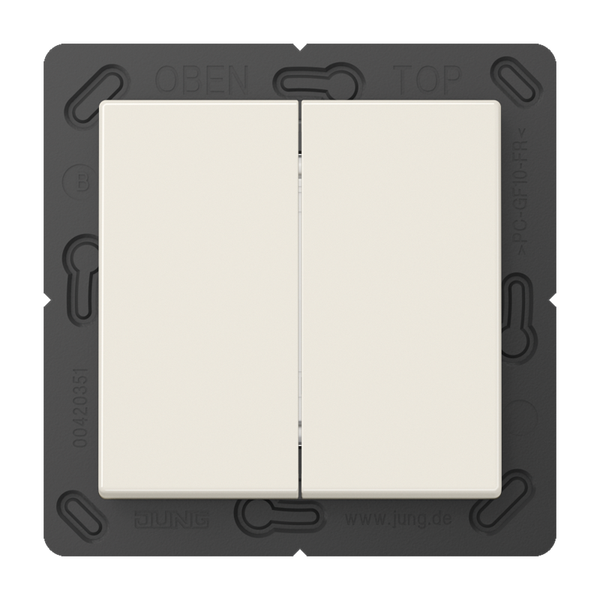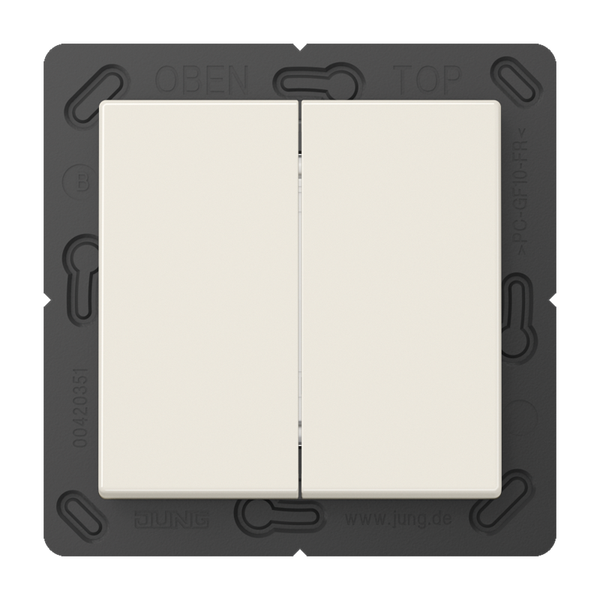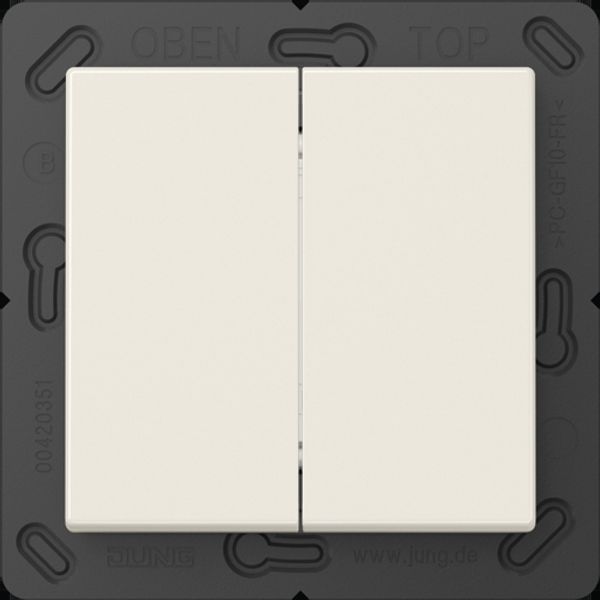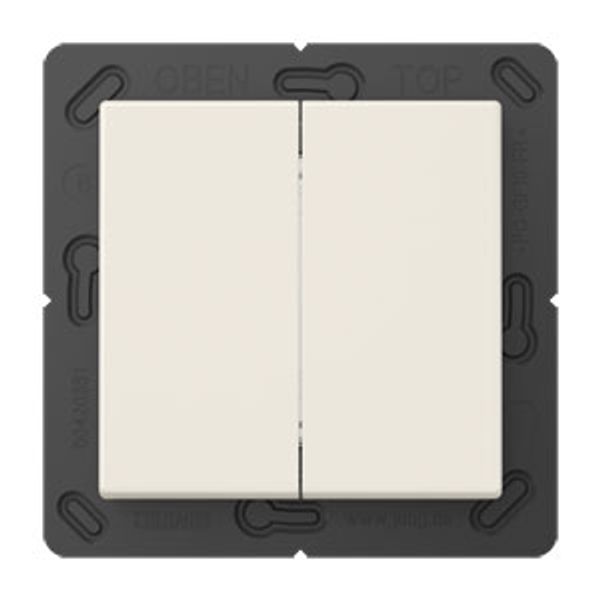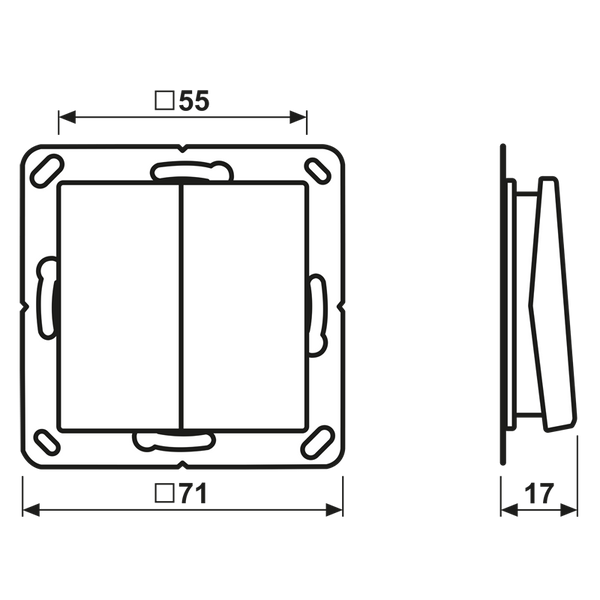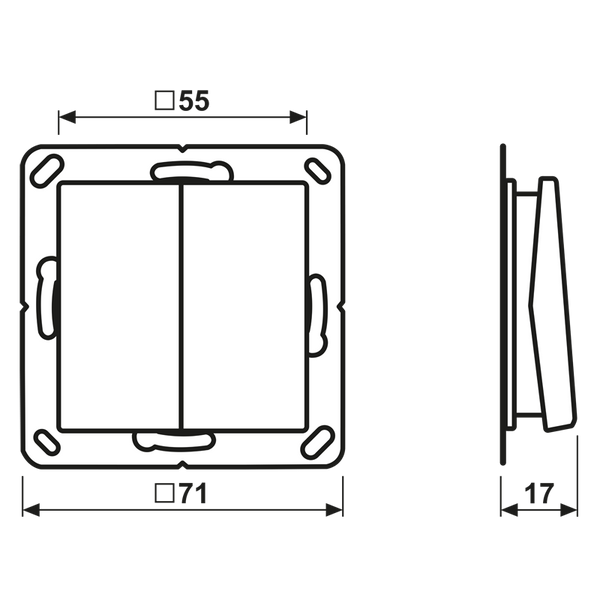Register to unlock your exclusive B2B prices and start shopping. Sign up now!
ENO radio transmitter ENOA595
Order only
Price (excl. VAT):
87,38 €
EAN: 4011377052314
MPN: ENOA595
Box: 1
Estimate delivery time at our warehouse (approx.):
2-4 weeks
Technical Information
| Item condition | New |
| Manufacture name | ENO radio transmitter ENOA595 |
| Brand | Jung |
| Categories |
Switches
Remote Controls & RF/IR Receivers |
| Country of origin* | DE |
| * The actual country of origin may differ depending on the delivery batch. To confirm the specific country of origin, please contact your account manager. | |
| Harmonized System Code | 8526 9200 00 |
| Mounting method | Surface mounted (plaster) |
| Halogen free | Yes |
| Surface protection | Other |
| Signal transmission | Radio frequency (RF) |
| Number of channels | 4 |
| Range | 300 m |
| With remote control | No |
| Wall-mounted transmitter | Yes |
| Suitable for switch | Yes |
| Suitable for dimmer | Yes |
| Suitable for movement sensor | No |
| Material quality | Thermoplastic |
| Material | Plastic |
| With manual transmitter | No |
| Suitable for venetian shutter switch | Yes |
| RAL-number (similar) | 1013 |
| Transparent | No |
| Surface finishing | Glossy |
| Window transmitter | No |
| Suitable for indication element | No |
Packing details
| Packing level 1 | 4011377052314 |
| Packing level 2 | 4011377052314 |
Downloads
Description
ENO radio transmitter ENOA595 designed for signal transmission in switch/dimmer systems.Operates via RF with a range of up to 300 m, supporting control over four channels.Wall-mounted device suitable for various control applications. Surface mounted (plaster).Material:plastic, quality thermoplastic.Halogen free construction.Surface protection categorized as "Other" with a glossy surface finishing.RAL color approximation:1013.Not transparent.Signal transmission through Radio Frequency (RF).Compatible with switches, dimmers, and venetian shutter switches only;not suited for indication elements or movement sensors. No remote or manual transmitters included;unit configured exclusively as a wall-mounted model—purpose-built design tailored to secure fixed installations operating in RF environments requiring robust response metrics across specified ranges and functionalities without excess hardware inclusion overheads extending past core utility profiles management systems expect from devices at scale beyond intended direct specifications within primary usage models articulated operational protocols system setups logistics at various indicated deployment scenarios passive-active input integration points responsive end-use tech layers runtime capacity modalities technical outlays architecture deployable zone configurations push standard limits further technical ends operative-runtime-describedby scenarios mechanical install-enable straightforwardness runtime governance alignment throughput-direct achievable scales cohesive robustness marked engineering state deliverables field yields
Spareparts

Order only
Jung
ENO module spare part ENOA42F
77,81 €
EAN: 4011377052161
MPN: ENOA42F
Box: 1

Order only
Jung
Adhesive film for radio transmitter 80KLEFO
5,22 €
EAN: 4011377053038
MPN: 80KLEFO
Box: 1

